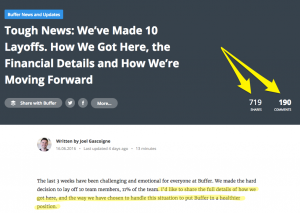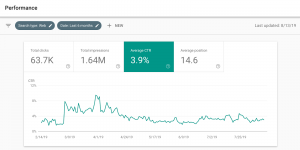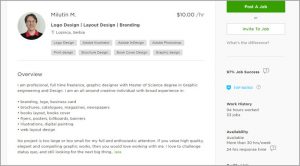How can retailers optimize their website and marketing strategy to get the most out of Pinterest? Columnist David Rekuc has the answers.
These days, it’s easy to get swept up in every shiny new marketing trend. Will the next big push be towards advertising on wearable tech, or should we devote resources towards advertising on the newest social platform?
These options usually leave marketers’ heads spinning – and when we do invest in the newest fad, more often than not we get burned.
That being said, I wholeheartedly believe “marketing fad” and “Pinterest” do not belong in the same sentence. Pinterest is an incredible vehicle for driving traffic to your site and, more importantly, conversions through your checkout.
Need proof? According to a 2013 study by Piqora, each pin generates $0.78 in sales on average. Further, a 2014 study by Javelin Strategy & Research found “Pinterest users’ average order value is $123.50, which is about 126% more than Facebook users’ $54.64 average order value.”
And it’s not just Etsy shop owners and recipe bloggers finding success on Pinterest. Brands like Nordstrom and Free People are well-known pinning all-stars.

At this point, you should know that Pinterest is important (or at least be intrigued enough to humor me). So how can you optimize your website and marketing strategy to get the most out of this particular social network? I’m glad you asked.
Get The Integration Right
There are four key components for integrating Pinterest on your website:
- The Pin It button needs to be prominent and easy to use. Depending on how important Pinterest is to your brand, you may want to consider giving it more visibility over other social media icons.
- Your site should automatically pull a well-optimized image when the user clicks on “Pin It.” I’ll talk more about what images work best for Pinterest later on, but above all, you want a clean, high-resolution image.
- Your site should automatically pull a well-written and concise description, which features a few relevant hashtags and key product data.
- Sharing from your site should automatically link each pin to the appropriate landing page (and append tracking info if desired). If you’d like to see referral traffic and ultimately sales from Pinterest, linking to the product is paramount. Surprisingly, this is the biggest area where marketers drop the ball.
Notice a theme? Arguably the most important tenet for encouraging social engagement on any platform is to reduce friction on the part of the user. Simply put, it is your job to make it as easy as possible to share – automatically.
Take this example from a popular recipe blog on Pinterest, Damn Delicious.

In the example above, the image grays out when the user “mouses over” it, which brings your attention to the Pin It button in the top left corner.
This article has a lean 122 tweets, but more than 80,000 pins. The blog smartly decided to emphasize its Pinterest presence and has been rewarded handsomely for it.
There are two ways customers can create a new pin from your site:
- Copying and pasting a URL onto the “add a pin” widget included on any Pinterest board
- Clicking a recognizable Pin It button that appears on or near an image
The second option is probably used more often, but it’s better to optimize for both ways to cover your bases, and it won’t greatly increase the amount of time you spend on each pin.
Option 1: Copying & Pasting The URL
For users who opt to copy and paste your URL, you want your website’s open graph meta tags to be configured so that Pinterest can recognize and pull the most important data. The code will look something like this:

You can find Pinterest’s guide to configuring Rich Pins for products here, and you can test whether a particular pin works with their Rich Pin validator here.
Maintaining your open graph tags is critical. Not only does it promise optimized copy-and-paste pins, it also ensures that Pinterest creates a Rich Pin with data like stock status and price automatically, even when a product is pinned using the Pin It button.
Option 2: Using A Pin It Button
Pinterest has an easy use tool that helps marketers create Pin It buttons. On product pages – and when your meta tags are configured properly – Pinterest’s Pin It button works perfectly.
However, Pinterest’s “button generator” is not ideal for all situations. If you want to post a URL on Facebook that auto-populates a Pin, or create a pin directly from a link in an email, you would need a custom URL.
Creating & Using A Custom URL
In the examples above and many other cases, it’s extremely advantageous to be able to generate a custom URL that pops a Pin It window with the correct data auto-filled for the user. This gives you the ability to control the pinning experience anywhere you use a URL. I’ll go over some cool uses for this later in my article.
To make creating the URL easier, I’ve put together an Excel spreadsheet that generates Pin It links. Input the three data points you want for a particular pin – the product URL, the image URL (the image to be used in the pin), and a pre-populated description – and voilà! You’ve got a URL that, when clicked, creates a Pin It window with the right data in it.

Here’s an example from Zappos, where I’m forcing Pinterest to use a specific image over the default from the product page. I generated the URL with my Excel spreadsheet, but as you can see, it has a predictable format and you can piece it together yourself separately fairly easily.
URL: http://www.zappos.com/spring-step-estella-blue
Image URL: http://a3.zassets.com/images/z/1/4/7/3/1/0/1473104-p-MULTIVIEW.jpg
Description: Spring Step Estella #Sandals #Wedges
The URL generator would give you a link like this:
http://www.pinterest.com/pin/create/button/?url=http://www.zappos.com/spring-step-estella-blue&media=http://a3.zassets.com/images/z/1/4/7/3/1/0/1473104-p-MULTIVIEW.jpg&description=Spring Step Estella %23Sandals %23Wedges
When you click it or load that URL in a browser, it looks like this:

And ultimately creates a pin like this:

Here, I forced the picture of the white shoe in place of the default blue shoe that the Pin It button generated from Zappos’s page. The $49.99 price and stock status has also been pulled in from the open graph tags on the page.
With this simple formula, you can generate a URL that makes the perfect pin and can be used almost anywhere on the web – on a Facebook post, in a marketing email, you name it. The Pin It call-to-action is no longer restricted to your site.
Get The Content Right
You can optimize your site and marketing strategies by putting the right technical pieces of the puzzle together, but it’s equally important to ask yourself, “Is this the right content to post?”
Note: This section assumes you’ve built a Pinterest page and are actively pinning. For more info on Pinterest basics, click here.
Following are some tips for optimizing your Pinterest content.
Price. Pins should include price whenever possible, but the best implementation is not in the description. In fact, Pinterest has cracked down on using price and URLs in the description and won’t allow them in Promoted Pins. This is why it’s critical to get your open graph tags configured correctly so the price is displayed in the rich pin and the landing page URL is properly linked.
Lighter Images. Darker, heavily shadowed images don’t do well. If you’re going to choose an image on the page, go for the lighter, clearer image. This is another reason why it’s nice to be able to force one image over another.
Call-To-Action. This is some good old-fashioned advertising at work here. Include a call to action for engagement increases.
Good Description Length. There’s a balance between verbose and not descriptive enough. Keep descriptions between 200 to 300 characters, as a general rule of thumb.
Image Height. Taller images perform better. Try showing more of the product, in context or even in multiple environments.
Faces. Eye tracking tests prove human faces draw the eye’s attention. But studies have shown that Pinterest images without faces actually perform better.

Timing. According to Piqora, 70% of a pin’s engagement occurs in the first 2 days. For this reason, we’ve noted that Nordstrom frequently pins on Saturdays and Sundays – when people have more time to browse.
Boards That Last. Use boards to group pins based on a specific interest or theme. Boards themselves get followers, and this group becomes a subscriber list to that specific content.
For example, Nordstrom created a board called Shoe Lust that gained 924 pins and 250,000 followers. Instead of taking the common approach of making a seasonal board, Nordstrom focused on a broader interest that conveniently has no expiration date. Nordstrom continues pinning to it year-round and puts content in front of the board’s 250,000 followers.
Get The Promotion Right
This isn’t Field of Dreams – if you build it, they may not come. Here are a few tips to increase Pinterest engagement among your followers:
- Use a post-purchase email to push Pinterest engagement. Using the URL generator I provided above, you could create a link that populates a pin for any purchased product. You can even tailor the description to show that the customer has already bought the item (and build in some social proof for their followers). The same idea can be applied to saved carts and wish lists.
- Cross-promote on your social profiles. Again, use the spreadsheet to create a shareable URL. You can post any image on Facebook or Twitter and provide a (shortened) link to pin it with one click. This decreases the friction of jumping from one social network to another. Shorten long links with Google or Bitly.
- Emphasize your Pin It button on your site. For many online retailers, Pinterest isn’t just another social network; it’s the social network.
- Promoted Pins are here, but have very limited targeting capabilities – at least for now. They suffer from the same problem most social media advertising does when it’s first released, i.e. “Is this engagement worth anything?” “Are these even my customers?”A smart alternative is to use Facebook and Twitter’s custom audiences to create an ad with a call-to-action urging members to pin a particular item. This way you ensure all ad engagement occurs with your customer base.
- Pinterest allows you to message other users directly. This can be a form of outreach to bloggers and potential influencers. The rules of outreach etiquette apply here, but it’s a way to proactively seek engagement.
If you have any questions about the content in this article or about using the Pinterest URL generator, or if you’d like to share additional Pinterest e-commerce tips, please reach out in the comments.
(327)








